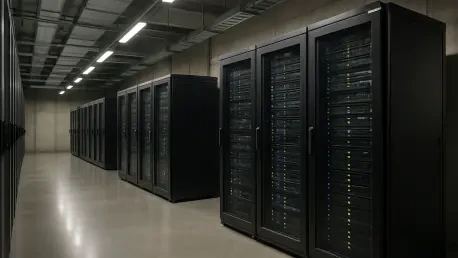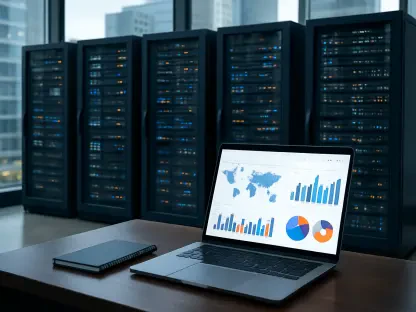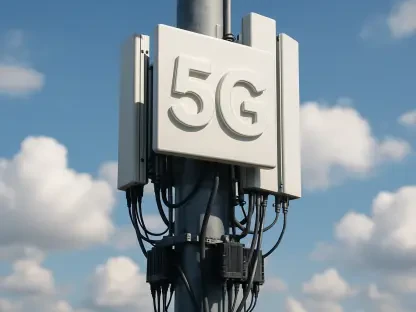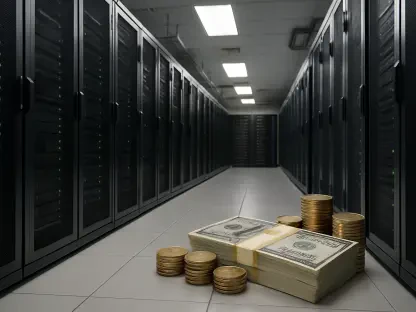Navigating the Energy Crisis in the AI-Driven Data Center Landscape
In an era where artificial intelligence (AI) powers everything from predictive analytics to autonomous vehicles, data centers stand as the critical infrastructure fueling this digital revolution, yet they face a daunting challenge. A staggering statistic looms over the industry: power consumption in these facilities is projected to more than double by 2030, reaching an estimated 945 terawatt hours (TWh), surpassing the total energy use of entire nations like Japan. This market analysis delves into the escalating energy demands driven by AI workloads, exploring how the data center sector is responding with innovative solutions. The purpose of this examination is to uncover current trends, forecast future challenges, and highlight strategic opportunities for balancing growth with sustainability. By dissecting market dynamics and technological advancements, this analysis aims to provide clarity on an issue that impacts both operational efficiency and global environmental goals.
Market Trends and Projections: AI as the Energy Game-Changer
Surging Demand and Its Economic Impact
The data center market is undergoing a seismic shift as AI workloads redefine energy consumption patterns. Currently, AI-driven processes, such as machine learning models and generative applications, account for a significant portion of power usage, with a single complex query consuming nearly ten times the energy of a standard search operation. Projections indicate that AI-related energy demands could climb from current levels to as much as 785 TWh by 2035, reflecting a profound challenge for operators. This surge not only strains operational budgets due to rising electricity costs but also places pressure on grid infrastructure, particularly in regions with limited capacity. Economically, unchecked energy costs could erode profit margins, pushing the industry to prioritize efficiency as a competitive differentiator.
Technological Adoption Driving Efficiency
Amid this energy crunch, the market is witnessing a rapid uptake of smart technologies designed to curb waste and optimize resources. AI itself, ironically the primary driver of power surges, is being harnessed for energy management, with systems that predict workload spikes and adjust power allocation dynamically. Reports suggest that such technologies have already reduced cooling energy by up to 40% in some major facilities, showcasing a tangible impact on operating expenses. Beyond AI, integrated power and cooling systems, like liquid cooling, are gaining traction for their ability to cut energy use significantly compared to traditional air-based methods, especially in high-density environments. These advancements signal a market trend toward holistic infrastructure solutions that promise both cost savings and enhanced reliability.
Regional Disparities Shaping Market Responses
Geographic variations add another layer of complexity to the data center energy market. In Europe, strict regulatory frameworks aimed at carbon neutrality are accelerating the integration of renewable energy sources, creating a sub-market for green technologies. Conversely, in parts of Asia, aging grid systems struggle to support the burgeoning demand, leading to higher operational risks and costs. Emerging tools, such as digital twins—virtual models of physical infrastructure—offer a way to tailor energy strategies to specific regional conditions by providing real-time performance insights. Additionally, energy storage solutions are beginning to emerge as a critical buffer against grid instability, reflecting a growing niche within the broader market. These disparities underscore the need for localized strategies that align with both regulatory mandates and infrastructure realities.
Future Outlook: Sustainability as a Market Driver
Looking ahead, the data center sector is poised for transformative growth, with sustainability becoming a central market driver. By 2035, industry forecasts suggest that nearly half of all facilities could adopt AI-optimized power management systems, fundamentally reshaping design and operational standards. Grid modernization and renewable energy partnerships are expected to gain momentum, driven by economic incentives and government policies pushing for reduced carbon footprints. The market is also likely to see increased investment in energy storage technologies to manage peak loads, ensuring stability as AI workloads continue to expand. This trajectory points to a future where energy efficiency and high performance converge, creating opportunities for innovators and operators who can navigate these evolving demands.
Reflecting on the Path Forward for Data Center Energy Strategies
This analysis has unpacked the critical energy challenges that define the data center market in the wake of AI’s explosive growth, revealing a landscape shaped by skyrocketing power demands and groundbreaking technological responses. It highlighted how AI serves as both a catalyst for consumption and a tool for optimization, how integrated systems address inefficiencies, and how regional differences influence strategic approaches. Key implications emerged, notably the economic necessity of energy efficiency and the competitive edge offered by sustainable practices. For the industry, the next steps involve actionable investments in AI-driven management tools to predict and mitigate power usage spikes. Operators also need to prioritize integrated cooling solutions and explore renewable energy collaborations to ensure long-term scalability. As the market evolves, staying ahead requires a commitment to testing and scaling these innovations through pilot programs, using metrics like Power Usage Effectiveness (PUE) to gauge success. These strategies position the sector to balance relentless growth with environmental responsibility, setting a foundation for resilience in an increasingly digital world.









